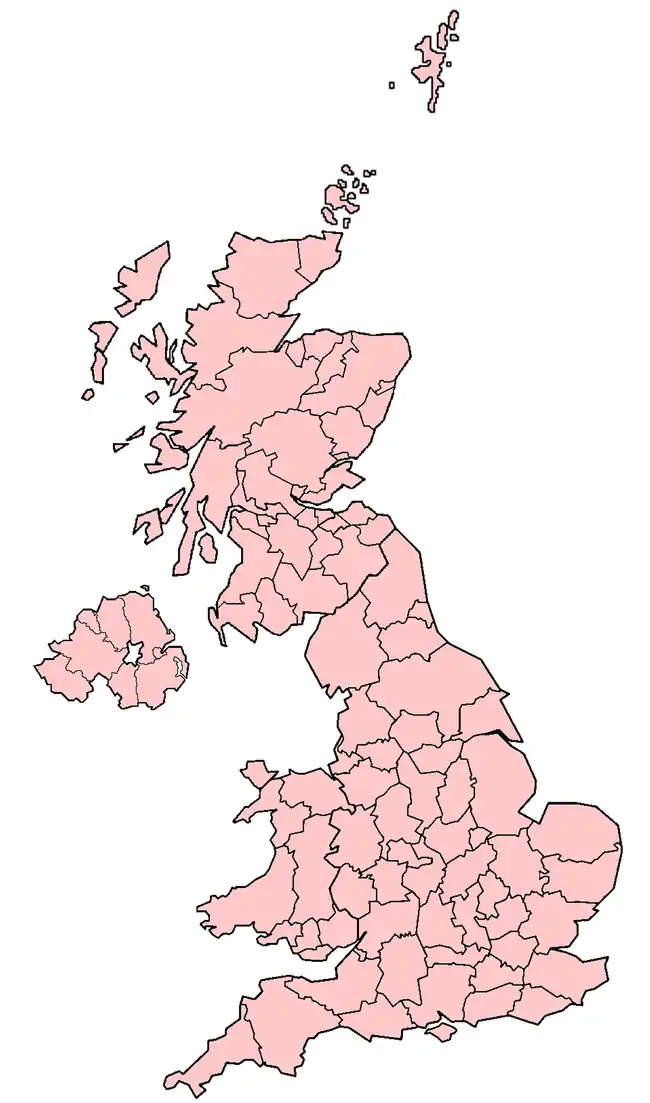Lieutenancy area
Lieutenancy areas /lɛfˈtɛnənsiː/, officially counties and areas for the purposes of the lieutenancies, are the separate areas of the United Kingdom appointed a lord-lieutenant – a representative of the British monarch. In many cases they have similar demarcation and naming to, but are not necessarily coterminate with, the counties of the United Kingdom.
| Lieutenancy area | |
|---|---|
 | |
| Category | County |
| Location | United Kingdom |
| Created by | Lieutenancies Act 1997 & the Northern Ireland (Lieutenancy) Order 1975 |
| Created |
|
| Number | 99 (as of 2008) |
| Possible types |
|
| Populations | 8,000–8,167,000[1] |
| Areas | 3–8,611 km² |
Origin
In England, lieutenancy areas are colloquially known as the ceremonial counties, although this phrase does not appear in any legislation referring to them. The lieutenancy areas of Scotland are subdivisions of Scotland that are more or less based on the counties of Scotland, making use of the major cities as separate entities.[2] In Wales, the lieutenancy areas are known as the preserved counties of Wales and are based on those used for lieutenancy and local government between 1974 and 1996. The lieutenancy areas of Northern Ireland correspond to the six counties and two former county boroughs.[3]
References
- Table 2 2011 Census: Usual resident population and population density, local authorities in the United Kingdom UK Census 2011 UK usual resident population Greater London excluding City of London
- The Lord-Lieutenants (Scotland) Order 1996, Statutory Instrument 1996 No. 731 (S.83)
- "Northern Ireland (Lieutenancy) Order 1975" (PDF). 1975.
